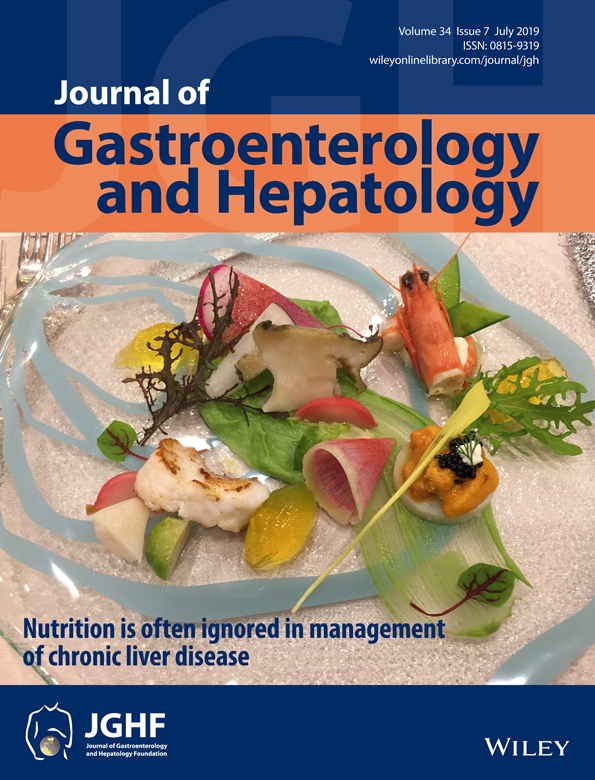Significant effects of late evening snack on liver functions in patients with liver cirrhosis: A meta-analysis of randomized controlled trials
Abstract
Background and Aim
Reducing post-absorptive (fasting) phase by eating late evening snacks (LESs) is a potential intervention to improve substrate utilization and reverse sarcopenia. This study analyzed the results of published randomized controlled trials and controlled clinical trials to evaluate the effects of LES on liver function of patients with cirrhosis.
Methods
A meta-analysis was conducted. The search strategy included electronic database searches, and 300 articles were searched. Eight of these articles provided qualified data for pooling and analysis. Outcomes assessments included serum albumin, total bilirubin, alanine aminotransferase, prothrombin time, and aspartate aminotransferase, complications of cirrhosis, severity of liver disease, and blood glucose levels.
Results
Our analysis included eight studies comprising 341 patients (167 in LES groups and 174 in control groups). The results showed that LES intervention helped to maintain liver reserves. These eight studies demonstrated that LES intervention had significant effects for liver biochemical parameters on albumin, ammonia, and prothrombin time, with respective effect sizes of 0.233, −0.425, and −0.589; liver enzymes include aspartate aminotransferase and alanine aminotransferase, with respective effect sizes of −0.320 and −0.284. Studies on clinical signs of liver dysfunction showed lower occurrence rates of ascites and hepatic encephalopathy than in the control group. LES had no significant effect on Child–Pugh score.
Conclusions
The overall results of the meta-analysis indicated that having LES can improve liver function reserve for patients with liver cirrhosis, with or without hepatocellular carcinoma. LES is a promising intervention for reversing anabolic resistance and the sarcopenia of cirrhosis, resulting in an improved quality of life for patients with cirrhosis.




